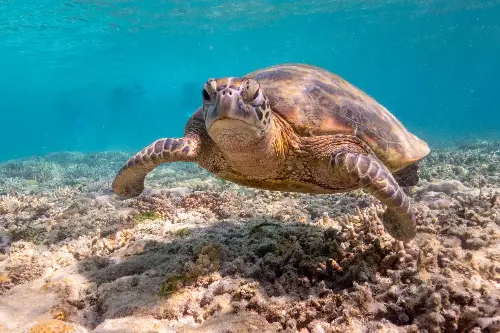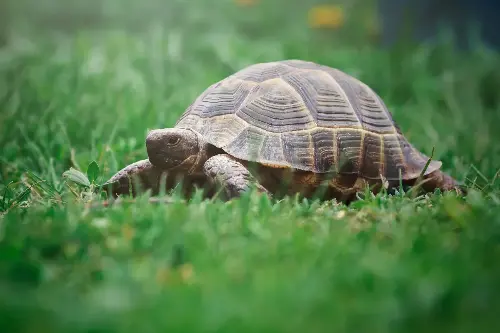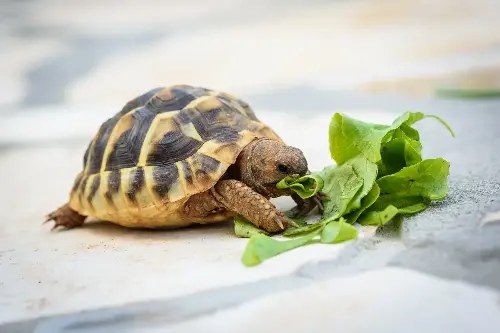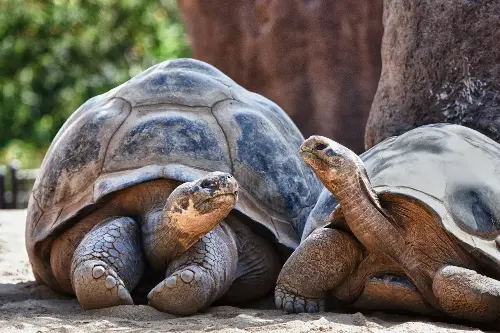In the pantheon of the shelled, slow-moving, and utterly fascinating reptiles that inhabit our planet, turtles and tortoises hold special places of admiration. Although they share many similarities, leading to common instances of mistaken identity, these creatures are remarkably different once you delve beneath the surface—or shell, in this case. Here, we explore the intriguing distinctions that set turtles and tortoises apart, drawing attention to their unique adaptations and lifestyles that make them so captivating.

Habitat and Lifestyle Variations
The most fundamental difference between turtles and tortoises is their preferred habitats. Turtles are adapted for life in water. Most turtles have streamlined, flat shells and webbed feet, or even flippers, like those of sea turtles. They spend much of their time in oceans, rivers, and lakes, coming ashore primarily for nesting. The semi-aquatic varieties, such as the pond turtles, prefer a life poised between land and water.

Tortoises, on the other hand, are essentially land dwellers. They boast domed, heavy shells that provide protection from predators on land. Their legs are stumpy and bent, more akin to an elephant's than their aquatic cousins, designed for roaming on terra firma. The desert-dwelling tortoises, such as the iconic Galápagos tortoises, can even withstand environments that are too arid for most other life forms.

Dietary Habits: A Matter of Environment
Diet is another area where these two groups diverge. Most turtles are omnivores, enjoying a diverse buffet that includes both plant and animal matter. Their aquatic environments are rich with opportunity to munch on anything from algae to small fish. Some species of sea turtles, like the green turtle, are primarily herbivores as adults, feasting on sea grasses and algae.
Tortoises have a diet that reflects the scarcity of food in their terrestrial environments. They are primarily herbivores, grazing on grasses, leaves, and even cactus in some cases. Their slow metabolism is tuned perfectly to a life where meals, especially in dry habitats, can be few and far between.

Survival Tactics: Shell Shape and Structure
The iconic shells of turtles and tortoises serve as their primary defense mechanism, but their distinct shapes optimize their effectiveness in different environments. Turtle shells are flatter and more hydrodynamic, allowing them to slip through water with ease. On the contrary, the high-domed shells of tortoises are more resistant to bites from ground predators.
The material of these shells also serves their various needs. Turtle shells tend to be lighter to avoid hampering aquatic agility. Tortoise shells are heavier and more solid, providing a formidable barrier against the threats encountered on land. Interestingly, the shell is a part of their skeleton, with the carapace (top part of the shell) being fused with their vertebrae and ribs.
Reproductive Strategies: Nesting Behaviours Unique to Each
The magical journey of life for these creatures starts from the egg. Both turtles and tortoises lay eggs, but their nesting habits demonstrate their adaptations to different environments. Sea turtles are famous for their mass nesting events, or arribadas, where females return to the very beaches where they were born to lay their eggs. Freshwater turtles also lay eggs on land, choosing spots that are safe from rising waters and predators.

Tortoises take a different approach, digging burrows or simple depressions in the soil for their eggs, depending on the species. Their terrestrial existence requires them to choose secure and temperate locations for the development of their offspring. The Galápagos tortoise, for example, lays eggs in nests on the volcanic islands of its namesake, carefully considering the thermal environment to ensure the eggs' survival.
Lifespan and Conservation: The Race Against Time
Both turtles and tortoises are known for their longevity, but tortoises hold the edge with some species living over a century. The Aldabra giant tortoise is one such example, with individuals living up to 150 years. Turtles, while not typically as long-lived as tortoises, can still enjoy a lifespan that ranges between 20 to 40 years for many species, with sea turtles often surpassing the 80-year mark.
However, despite their impressive lifespans, both turtles and tortoises face significant threats from human activities and environmental changes. Habitat destruction, pollution, climate change, and poaching for the pet trade or for consumption all play a part in their dwindling numbers. Many species of both turtles and tortoises are listed as vulnerable or endangered, making conservation efforts crucial for their survival.

Understanding and Appreciating Diversity
Turtles and tortoises may seem alike at a cursory glance, but their differences exemplify the beauty of evolutionary adaptation. From their varied habitats to their unique physical characteristics and survival strategies, turtles and tortoises reveal the complexity of life and the importance of biodiversity.
By learning about these differences, we gain a deeper appreciation for these incredible reptiles and the roles they play in the ecosystems they inhabit. Their continued existence depends on our awareness and action. So, next time you see a shelled creature basking in the sun or gliding through the water, take a moment to admire the particular traits that enable it to thrive in its environment—whether it be the versatile turtle or the steadfast tortoise.
